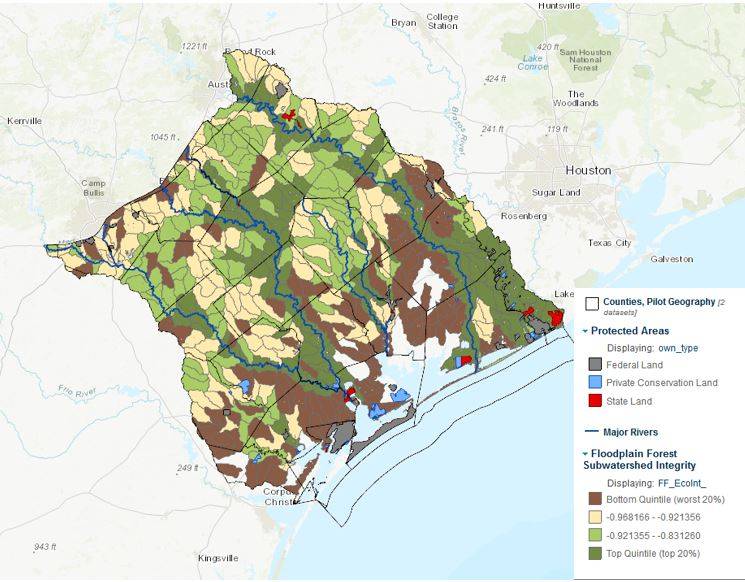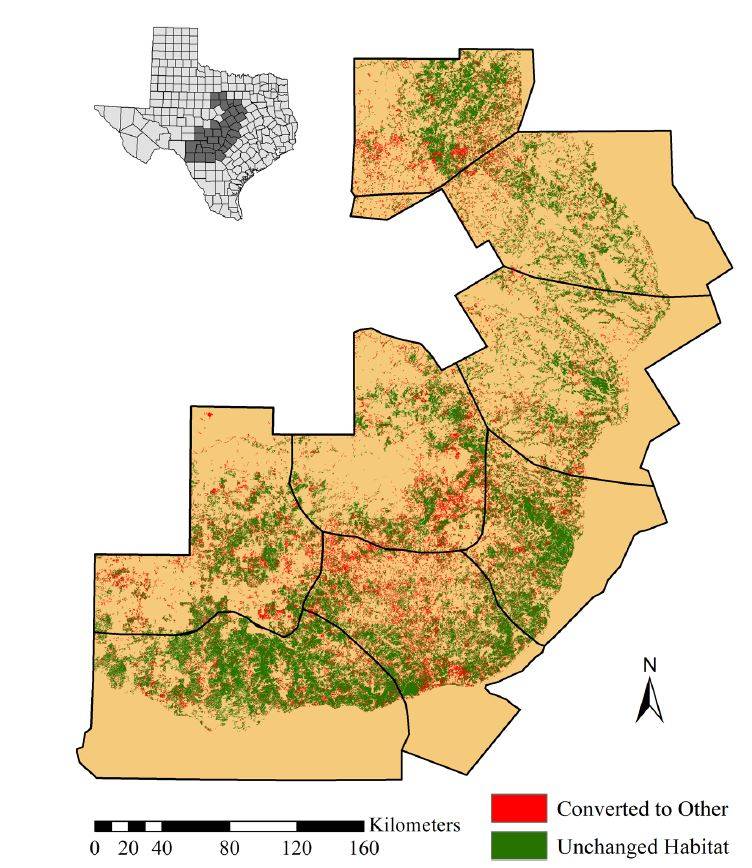Biodiversity and Wildlife Habitat Modeling
Edwards to Gulf Conservation Blueprint

USFWS invested in a partner-driven, collaborative process to engage and support state, federal, and nongovernmental conservation interests for a suite of priority species (including alligator gar, American oyster, freshwater mussels, Guadalupe bass, mottled duck, northern bobwhite, and more) and their associated habitats from the Edwards Plateau to the Gulf of Mexico in Texas. A core team of state, federal, non-governmental, and academic biologists collaborated with a broad community of resource agencies (e.g., Texas Parks and Wildlife Department, River Authorities, FWS, NRCS) to create (1) a common vision for conservation across state, federal, and non-governmental conservation agencies, and (2) spatially-explicit decision-support tools that can be used to identify and prioritize where to protect, manage, and restore habitats in this landscape. The process and tools are meant to serve as a blueprint for conservation in the Lower Colorado, Guadalupe, and San Antonio River watersheds that will shape a future for conservation across the many working lands and ranches that the landscape supports.
Edwards to Gulf Landscape Conservation Design
Spatiotemporal variation in range-wide Golden-cheeked Warbler Breeding Habitat

Habitat availability ultimately limits the distribution and abundance of wildlife species. Consequently, it is paramount to identify where wildlife habitat is and understand how it changes over time in order to implement large-scale wildlife conservation plans. Yet, no work has quantified the degree of change in range-wide breeding habitat for the Golden-cheeked Warbler (Setophaga chrysoparia), despite the species being listed as endangered by the U.S. Federal Government. Thus, using available GIS data and Landsat imagery we quantified range-wide warbler breeding habitat change from 1999–2001 to 2010–2011. We detected a 29% reduction in total warbler breeding habitat and found that warbler breeding habitat was removed and became more fragmented at uneven rates across the warbler’s breeding range during this time period. This study highlights the need for future work centered on quantifying Golden-cheeked Warbler movement rates and distances in order to assess the degree of connectivity between increasingly fragmented habitat patches.
Email: adam.duarte@oregonstate.edu
